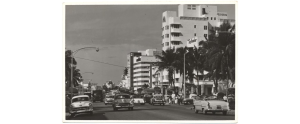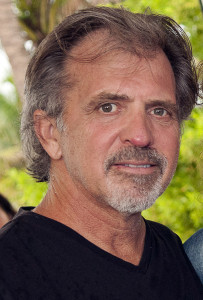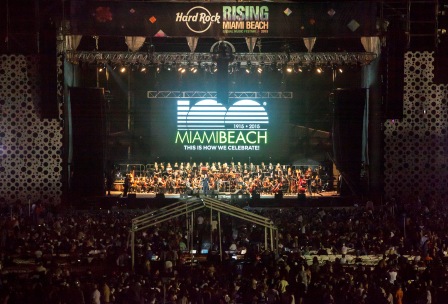The City of Miami Beach Awarded ACT Productions the Executive Producer Rights to the Miami Beach’s 2015 Yearlong Centennial Celebration and this is one party that won’t stop until October 31, 2015.
And, in great South Beach style, the party never really stops.
There have been events throughout the year at cultural, fashion, sports and entertainment hot spots of Miami Beach – ranging from Art Basel Miami Beach to the Miami International Auto Show and at South Beach Wine & Food Festival.
This grand celebration was spearheaded by Miami Beach Mayor Philip Levine and culminated with a major 100-hour extravaganza that perfectly celebrates its diverse and lively history, which you will be able to read about in our three part series. A special thanks goes to Bruce Orosz, CEO of event management firm ACT Productions, Inc., who provided Hola Latinos Magazine an exclusive interview, as well as photos for our Special Miami Beach Summer Series.
The Centennial Celebration culminated with an iconic oceanfront music festival– the Hard Rock RISING, featuring Global superstars Andrea Bocelli, Barry Gibb, Gloria Estefan and headlined a great list of artists whose work has contributed to Miami Beach’s cultural tapestry. They include Grammy award winning musician Jon Secada, Jamaican reggae and hip-hop artist Ky-Mani Marley, jazz flautist Nestor Torres, Miami Beach jazz vocalist Nicole Henry, and Jamaican reggae band Third World — all under the musical direction of producer Rudy Perez. Numerous other international stars including our featured cover celebrity, Mariana Vega, contributed to this 100 year celebration.
Miami Beach: “The Billion Dollar Sandbar”
Highlights of The Early Years

By: Nancy Esteves
Who would have said that this 165-acre swampy sandbar intended for planting and harvesting coconuts would become the American Riviera it is today. This man-made island, Miami Beach, separated by Biscayne Bay from the Miami mainland, was originally purchased from federal government in 1870 for $.25 an acre by Henry and Charles Lum, from New Jersey.
Lum would later sell the property to Elnathan Field and Ezra Osborne, from New Jersey who, in turn sold the land to John S. Collins and his son-in-law, Thomas Pancoast, also from New Jersey.
Collins constructs the Collins Bridge. The bridge connects Miami and Miami Beach; and is awarded the title of “the longest wagon bridge in the world”.
But it all happens because of Carl Fisher, an eccentric millionaire with a developer’s vision who loan John Collins the money he needed to complete the bridge.
Fisher was a great visionary. He saw the potential of turning mangroves and farmland into an oceanfront jewel vacation getaway and earning its name— Billion Dollar Sandbar.
“Fischer and Collins made their mark here. Collins created Collins Avenue in the era of the 40s and made people realize that this was the sun capital of America. They were extremely smart back then …when they saw snow storms in the north they would advertise bikinis and sunny, sandy beaches and people would flock here,” said Bruce Orosz, President and CEO of Act Production and Chairman of the Greater Miami Visitors & Convention Bureau.
Rosie, an Asian elephant, was an instrumental figure in the history of Miami Beach, Florida. Her appearance in publicity photos helped to contribute to the area’s early reputation for being a place that a visitor had to see to believe.
Before Fischer built Miami Beach, he built racetracks and roadways. His early love of bicycles and automobiles culminated in a desire to create destinations. Fisher had made his fortune from his invention of the Presto-o-Lite Corporation and the Indianapolis Motor Speedway among other business endeavors. He laid the groundwork for what Lincoln Road would become by building a hotel on the famous street. His actions jump-started a tourism boom that saw more than 50 hotels later.
The great boom of the 1920’s would see enormous growth and mansions erected over a three-mile stretch of land known as the “Millionaire’s Row.”
Miami Beach after the great hurricane on 1926
THE ‘40s & ‘50s
Year 1940
Population: 28,000
Miami Beach became the place to be in the late ’40s and ’50s. Department stores such as Saks Fifth Avenue and Bonwit Teller drew shoppers to Lincoln Road, while show hotels like the Sans Souci, Casablanca, the Algiers, and the Saxony, and bustled with celebrities such as Sammy Davis Jr., Dean Martin, and Frank Sinatra.
“In this era you had tremendous jazz influence from all over, like Harry Belafonte, Rat Packers: Dean Martin, Frank Sinatra….”
Up through the ’50s and early ’60s, there was prevalent discrimination. Black entertainers actually had to go through the service entrance of hotels, and they weren’t allowed to spend the night.
“This period of time was a very changing era, because of the black/white issue people not allowed to stay on Miami Beach until Sinatra and friends changed that along with Harry Belafonte that was the significant turning point in this community in this city”.
In the early 1950’s the Fontainebleau rose to be largest hotel on Miami Beach with 554 guest rooms and 17,000-square-foot lobby with its signature bow-tie marble floors, Russian and Turkish baths, and 250 cabanas surrounding a gigantic pool. Then in 1956, Eden Rock Hotel opened its door.
The ‘60s
Year 1960
Miami Beach Population: 63,200
The Golden Age
The year 1964, was big for Miami Beach: A 22-year-old underdog by the name of Cassius Clay defeated Sonny Liston in the heavyweight boxing championship at the Convention Center and the Beatles came to Miami Beach’s famous Deauville Hotel to film an appearance on The Ed Sullivan Show. It was also an era replete with illegal gambling.
“Al Capone was a major factor and then you had the Meyer Lansky and that gang, they all worked together to create kind of a period of mystique in this town– you had the glitz and glamour on one side, and you had Cuba and Capone, and all of that commuting between the two islands for gambling… That was a very lively and untouchable era,” said Orosz. “In those days mobsters were glamorous in a way… they were like celebrities.”
The Miami Beach Convention Center takes off
“When Jackie Gleason moved his show here, that was a big game changer because when he coined the phrase Live From Miami Beach — Jackie Gleason and the Honeymooners was nationally televised and was a hugely successful and popular show which anchored the Film and TV community here. Before then, there were basically little Coppertone ads,” said Orosz. After Jackie Gleason, there was an explosion in the TV industry and a lot of producers came down from NY….this spawn interest in Miami as a location and destination.”
Stay tuned for Part 2 – The ‘70s & ‘80s in our June Issue
Miami Beach: “El Banco de Arena de un Billón de Dólares”
Por: Nancy Esteves
Aspectos destacados de los primeros años
¿Quién habría dicho que estos 165 acres de banco de arena pantanoso destinados para la siembra y cosecha de cocos se convertirían en el American Riviera que es hoy? Esta isla hecha por el hombre, Miami Beach, separada por Biscayne Bay de las tierras principales de Miami, fue comprada originalmente por Henry y Charles Lum al gobierno federal en 1870 a $ .25 por acre, desde New Jersey.
Más tarde Lum vendería la propiedad a Elnathan Campo y Esdras Osborne de Nueva Jersey quienes, a su vez le vendieron la tierra a John S. Collins y su hijo-en-ley, Thomas Pancoast, también de New Jersey.
Collins construyó el puente Collins Bridge. El puente conecta Miami con Miami Beach y le otorgaron el título de ” el puente de carga más largo del mundo”.
Pero todo sucede gracias a la visión desarrolladora de Carl Fisher, un excéntrico millonario quien le presta el dinero necesario a Collins para completar el puente.
Fisher fue un gran visionario. Vio el potencial en transformar los manglares y tierras de cultivo en una joya de escapadas vacacionales frente al mar ganando así su sobrenombre—Billion Dólar Sandbar
“Fischer y Collins dejaron su marca aquí. Collins creó Collins Ave en los años 40s y con ello hizo que la gente se diera cuenta de que ésta era la capital del sol en América. Fueron extremadamente inteligentes. En ese entonces… cuando había tormentas de nieve en el norte, ellos hacían publicidad de bikinis y playas soleadas para que las personas vinieran” dijo Bruce Orosz , fundador de Act Producciones y presidente del Greater Miami Visitors & Convention Bureau.
Rosie, un elefante asiático, fue una figura clave en la historia de Miami Beach, Florida. Sus apariciones en fotos publicitarias ayudaron a contribuir con la reputación de la zona. Un lugar que el visitante tenía que ver para creer.
Fischer construía pistas de carreras y carreteras, antes de que construyera Miami Beach. Su amor por las bicicletas y automóviles culminó con el deseo de crear destinos. Fisher había hecho su fortuna con su invención del Presto -o- Lite Corporation y el Indianapolis Motor Speedway y otros negocios. Fisher creó las bases de la famosa calle Lincoln Road, mediante la construcción de un hotel. Sus acciones comenzarían un boom turístico que traería la construcción de 50 hoteles más. El gran boom de la década de 1920 vería enormes crecimientos y mansiones sobre un tramo de tres millas de tierra conocida como la “Millionaire’s Row”, la “fila de los millonarios”.
Miami Beach después del gran huracán en 1926
LOS 40s & 50s
Año 1940
Población: 28,000
Miami Beach se convirtió en el lugar para estar en los años 40 y en los finales de los 50. Grandes almacenes como Saks Fifth Avenue y Bonwit Teller atrajeron compradores a Lincoln Road, así como los hoteles Sans Souci , Casablanca, el Argel, y el Sajonia con celebridades como Sammy Davis Jr. , Dean Martin y Frank Sinatra.
“En esta era tenían a los grandes influenciadores del jazz de todas partes, tales como Harry Belafonte, Rat Packers, Dean Martin , Frank Sinatra….”
Durante los años 50 y a principios de los años 60, prevalecía la discriminación racial. Los artistas negros tenían que pasar por la puerta de servicio de los hoteles y no se les permitía quedarse en la noche.
“Este período de tiempo fue una época muy cambiante, debido a los problemas entre los blancos y negros, a la gente no se le permitía permanecer en Miami Beach, hasta que Sinatra y sus amigos junto a Harry Belafonte cambiaron esto. Esto fue un punto de inflexión importante para la comunidad de esta ciudad.
A principios de la década de 1950 el Fontainebleau llegó a ser el hotel más grande en Miami Beach, con 554 habitaciones y 17,000 pies cuadrados de vestíbulo con pisos de mármol, baños rusos, turcos y 250 cabañas que rodeaban una piscina gigantesca. En 1956, abrió el Hotel Eden Rock.
The 60s
Año 1960
Población de Miami Beach: 63,200
La Era Dorada
El año 1964 fue grande para Miami Beach: Un boxeador, no favorito de 22 años de edad, con el nombre de Cassius Clay derrotó a Sonny Liston en el campeonato mundial de boxeo en el Convention Center; los Beatles llegaron al famoso Hotel Deauville de Miami Beach para filmar una aparición en El Show de Ed Sullivan.
También fue una época de muchos juegos de apuestas ilegales. “Las pandillas de Al Capone y Meyer Lansky, trabajaron juntos para crear una especie de periodo de misterio en esta ciudad—por un lado tenía glamour y por el otro Cuba y Capone. Todos los desplazamientos entre las dos islas eran con motivo a los juegos de apuestas. Esa fue una época muy animada e intocable ” dijo Orosz. “En algún modo, en aquellos días los mafiosos tenían glamour … eran como celebridades.”
Despega el Centro de Convenciones de Miami Beach
“Jackie Gleason hizo un gran cambio cuando descubrió Miami Beach y trasladó su espectáculo aquí, estableciendo la frase “Live From Miami Beach”– Jackie Gleason y Honeymooners fue televisado a nivel nacional siendo un programa popular de mucho éxito que enamoró a la comunidad del Cine y TV aquí. Antes de esto, había básicamente pequeños anuncios Coppertone” dijo Orosz. Después de Jackie Gleason, se produjo una explosión en la industria de la televisión y una gran cantidad de productores bajaron desde NY … creandole fama a Miami como ubicación y destino.”
Parte 2 -70s & 80s
Regresa aquí y mantente sintonizado próximamente en nuestra edición de Junio.
.

Bruce Orosz, President and CEO started ACT Productions – his full-service production company for film, video, photography, staging, audio, lighting, tenting and set design – in New York City some 30 years ago and later move himself and ACT Productions to Miami Beach. Last month, ACT Productions provided 100 hours of programming leading up to a major concert on the beach on Seventh Street for a one-of-a kind Miami Beach Centennial celebration. Orosz is also Chairman of the Greater Miami Convention & Visitors Bureau.


 Contact Us
Contact Us